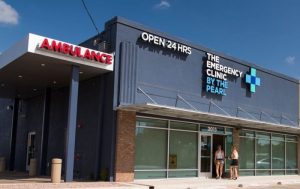Emergency Care for Diabetes Patients sets the stage for this enthralling narrative, offering readers a glimpse into a story that is rich in detail with a focus on quick intervention and management, brimming with originality from the outset.
In this comprehensive guide, we delve into the importance of immediate action in emergencies, types of diabetic emergencies, preventive measures, and much more to equip you with essential knowledge for handling such situations effectively.
Emergency Care for Diabetes Patients

In emergency situations, quick intervention is crucial for diabetes patients to prevent serious complications or even death. Knowing how to identify and respond to diabetic emergencies can save lives and improve outcomes for those affected by the condition.
Common Emergencies for Diabetes Patients
- Hypoglycemia (low blood sugar): This can occur when a diabetic patient takes too much insulin or skips a meal, leading to symptoms like dizziness, confusion, sweating, and weakness.
- Hyperglycemia (high blood sugar): Resulting from insufficient insulin or illness, symptoms include extreme thirst, frequent urination, nausea, and confusion.
- Diabetic ketoacidosis (DKA): A serious complication of diabetes characterized by high blood sugar, ketones in urine, dehydration, and abdominal pain.
Symptoms of a Diabetic Emergency
- Rapid heartbeat
- Extreme thirst
- Confusion or dizziness
- Excessive sweating or clamminess
- Unresponsiveness or unconsciousness
Providing Emergency Care
- Check blood sugar levels immediately.
- If the patient is conscious and experiencing hypoglycemia, provide fast-acting carbohydrates like fruit juice or glucose tablets.
- If the patient is unconscious or showing signs of severe hyperglycemia or DKA, seek medical help immediately.
- Stay with the patient until help arrives and monitor their condition closely.
Types of Diabetic Emergencies
In diabetic emergencies, it is crucial to differentiate between hypoglycemia and hyperglycemia to provide the appropriate treatment promptly.
Hypoglycemia vs. Hyperglycemia Emergencies
- Hypoglycemia occurs when blood sugar levels drop too low, leading to symptoms such as shakiness, confusion, sweating, and dizziness.
- Hyperglycemia, on the other hand, occurs when blood sugar levels are too high, causing symptoms like increased thirst, frequent urination, fatigue, and blurred vision.
Signs and Symptoms of Diabetic Ketoacidosis (DKA)
- DKA is a serious complication of diabetes characterized by high blood sugar levels, dehydration, and the presence of ketones in the urine.
- Common symptoms of DKA include excessive thirst, frequent urination, nausea, vomiting, abdominal pain, and confusion.
- If left untreated, DKA can lead to severe complications such as cerebral edema, kidney failure, and even death.
Potential Complications of Untreated Diabetic Emergencies
- Untreated hypoglycemia can result in seizures, loss of consciousness, and even coma.
- Untreated hyperglycemia can lead to diabetic ketoacidosis, hyperosmolar hyperglycemic state, and long-term complications such as nerve damage, heart disease, and kidney failure.
Comparison of Treatment Approaches for Diabetic Emergencies
- Hypoglycemia emergencies are typically treated with fast-acting carbohydrates like glucose tablets, while severe cases may require glucagon injections.
- Hyperglycemia emergencies often involve administering insulin to lower blood sugar levels, along with rehydration and electrolyte replacement.
- DKA requires intravenous fluids, insulin therapy, and close monitoring to correct dehydration, electrolyte imbalances, and acidosis.
Immediate Actions in Diabetic Emergencies
When faced with a diabetic emergency, prompt and proper actions are crucial to ensure the patient’s well-being and prevent any complications. Here are the initial steps to assess a diabetes patient in an emergency situation:
Importance of Blood Glucose Monitoring
Monitoring the blood glucose levels of a diabetic patient during emergencies is essential as it helps determine the appropriate course of action. Low blood sugar (hypoglycemia) and high blood sugar (hyperglycemia) both require specific interventions.
- For hypoglycemia: Check the blood sugar level using a glucose meter. If it’s below 70 mg/dL, provide a fast-acting source of glucose such as fruit juice, candy, or glucose tablets.
- For hyperglycemia: High blood sugar levels may require insulin administration. However, ensure the patient is not experiencing diabetic ketoacidosis (DKA) or hyperosmolar hyperglycemic state (HHS) before administering insulin.
Remember, always have access to a glucose meter and fast-acting glucose sources in case of emergencies.
Administration of Insulin or Glucose
In diabetic emergencies, the administration of insulin or glucose should be done cautiously based on the patient’s blood sugar levels and the specific emergency situation:
- For hypoglycemia: If the patient is conscious and able to swallow, provide fast-acting carbohydrates orally. If the patient is unconscious, administer glucagon injection or call for emergency medical assistance.
- For hyperglycemia: If the patient is experiencing DKA or HHS, insulin therapy may be necessary. However, it’s crucial to seek medical help promptly as these conditions can be life-threatening.
When to Seek Medical Help
Knowing when to seek medical help or call emergency services is vital in diabetic emergencies to prevent complications and ensure proper treatment:
- If the patient is unconscious or unable to swallow in cases of hypoglycemia, seek emergency medical assistance immediately.
- In situations of severe hyperglycemia with symptoms of DKA or HHS, do not delay in seeking medical help as these conditions require urgent intervention.
Preventive Measures for Diabetic Emergencies

Regular monitoring and management of blood sugar levels play a crucial role in preventing diabetic emergencies. Creating an emergency plan and educating patients about the importance of awareness are also key factors in preventing emergencies.
Importance of Regular Monitoring and Management
- Monitor blood sugar levels regularly as per the healthcare provider’s recommendations.
- Keep track of carbohydrate intake and adhere to a balanced diet.
- Take prescribed medications on time and as directed.
- Stay physically active and maintain a healthy lifestyle.
Creating an Emergency Plan
- Work with healthcare providers to develop a personalized emergency plan.
- Include contact information for healthcare professionals, emergency contacts, and instructions on what to do during an emergency.
- Keep emergency supplies like glucose tablets, insulin, and a glucagon kit readily accessible.
Role of Education and Awareness
- Educate patients about the signs and symptoms of diabetic emergencies.
- Provide information on how to respond to low or high blood sugar levels effectively.
- Raise awareness about the importance of regular check-ups and preventive measures.
As we conclude this exploration of Emergency Care for Diabetes Patients, remember that swift response and proper management are crucial in ensuring the well-being of individuals facing diabetic emergencies. Stay informed, prepared, and proactive to make a difference when it matters the most.
Helpful Answers
What are the signs of a diabetic emergency?
Common signs include extreme thirst, confusion, rapid heartbeat, and unconsciousness.
How can I prevent diabetic emergencies?
Regular blood sugar monitoring, following a proper diet, and having an emergency plan in place can help prevent diabetic emergencies.
When should I seek medical help during a diabetic emergency?
If a diabetic person is unresponsive, experiencing seizures, or has extremely high or low blood sugar levels, seek medical help immediately.





